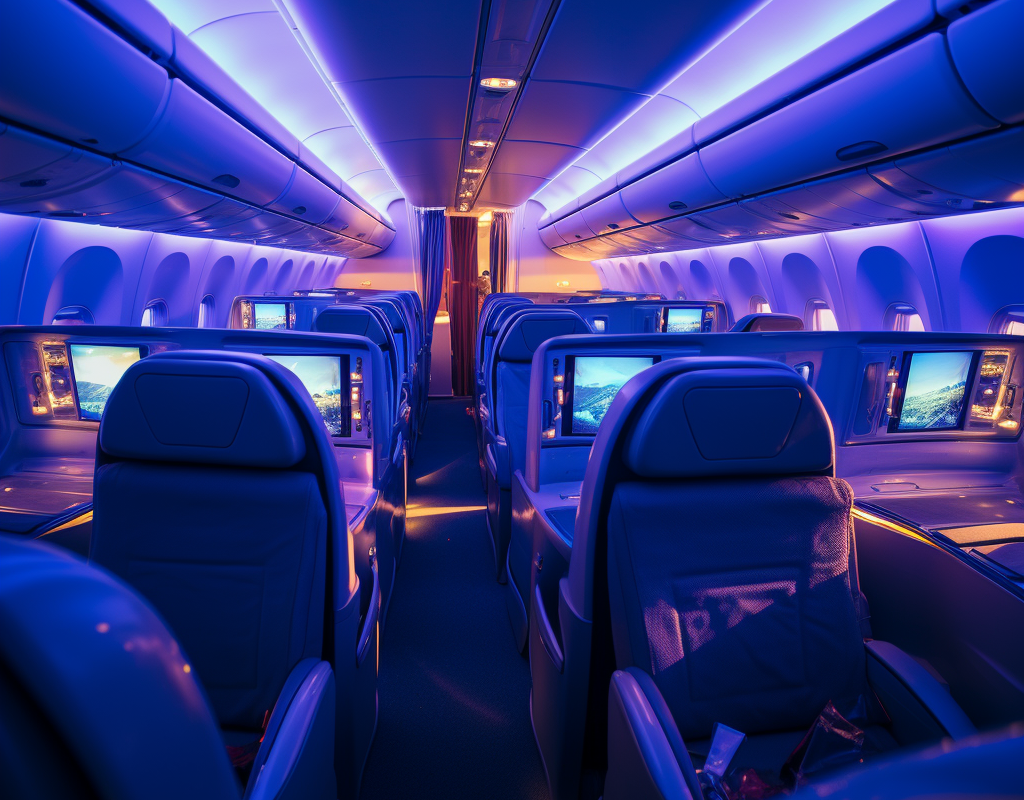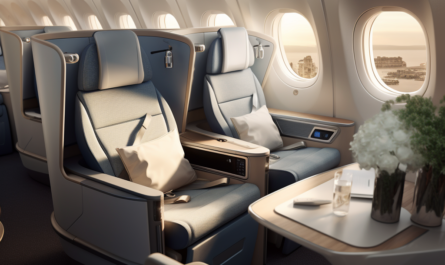Fundamentals of lighting in aviation
Lighting in aircraft cabins plays a key role in creating comfortable conditions for passengers. Modern lighting technologies, such as LED panels, provide ample opportunities to create an optimal atmosphere during flight. LED lighting provides brightness and color reproduction, which not only improve visual comfort, but also help reduce the level of fatigue and stress among passengers.
Effective lighting affects the mood, energy, appetite and circadian rhythms of passengers. The use of such lighting systems allows you to create various scenarios on board, from “sunrise” to imitation of the starry sky, which makes the flight more pleasant and less tedious. Modern lighting systems provide the ability to adjust the color and intensity of light, which allows passengers to adapt to changing time zones and reduce the impact of jetlag.
The effect of lighting on passengers
The impact of lighting on airplane passengers covers both psychological and physiological aspects of their well-being. Light plays an important role in regulating circadian rhythms, which are responsible for sleep, wakefulness and general health. This is especially true in flight conditions, when passengers often experience discomfort due to changes in time zones and the accompanying jet lag.
Properly designed lighting can create the illusion of natural light, thereby helping passengers adapt to the new time and reducing the negative impact of long flights on their biological clock. For example, lighting that simulates dawn can gradually prepare the body for awakening, while warmer and softer light tones in the evening contribute to relaxation and preparation for sleep.
Innovations in business class lighting systems
Innovations in business class lighting systems have significantly improved the comfort and overall impression of passengers during the flight. Modern technologies such as LED lighting offer a wide range of possibilities to create a unique atmosphere on board. LED lighting stands out for its energy efficiency and durability. Unlike traditional lamps, LED lamps consume less energy and have a significantly longer service life. This is not only economical, but also reduces the need for frequent replacement of lighting elements, which is important for airlines in terms of reducing operating costs.
One of the most notable innovations is the dynamic change in color and light intensity. This feature allows airlines to create different lighting scenarios depending on the time of day or flight phase. For example, during night flights, lighting can be softened to create a calm atmosphere that promotes relaxation and sleep. At the same time, brighter and more invigorating lighting can be used in the morning, imitating the natural light of the sun.
Case study: Interior lighting and design
Case studies on cabin lighting and design in aviation show how innovative lighting can significantly improve the passenger experience in business class. Let’s look at some examples:
- Emirates and their Boeing 777: This airline has implemented a lighting system in its Boeing 777 aircraft that allows you to create various scenarios – from softened light for relaxation to bright for work. The lighting is designed in such a way as to minimize jet lag and improve the overall well-being of passengers, especially on long flights.
- Lufthansa and their Airbus A350: Lufthansa has used the LED lighting features in the Airbus A350 to create a more natural atmosphere on board. The lighting system adapts to the circadian rhythms of passengers, which helps them better cope with changing time zones and improves sleep quality.
- Qatar Airways and their QSuite: Qatar Airways has implemented an innovative lighting system in its QSuite cabins, which allows passengers to customize the lighting according to their personal preferences. This system not only provides improved comfort, but also creates an individual space for each passenger.
The Future of Aviation lighting
One of the directions is the further development of LED technologies. Due to their energy efficiency and flexibility in creating different lighting scenarios, LED lighting will be further adapted to create individual and dynamic lighting environments. It is expected that the ability to adjust the color and light intensity will become even more advanced, allowing passengers to personalize their lighting depending on personal preferences or time of day.
The next important aspect is the integration of lighting with other cabin systems such as entertainment and climate control systems. This will create a more intuitive and comfortable space where all cabin elements work synchronously to ensure an optimal flight experience. It is also expected to increase the use of intelligent lighting that can automatically adapt to the circadian rhythms of passengers, which will help reduce the impact of jetlag and improve the overall well-being of passengers during long flights.
The effect of lighting on the overall flight experience
The lighting in the business class of airliners plays a significant role in shaping the overall flight experience and passenger satisfaction. Firstly, it helps to create a unique atmosphere in the salon, where the use of different colors and light intensities can stimulate relaxation or, conversely, cheerfulness. Secondly, lighting adjusted in accordance with the biorhythms of passengers reduces jet lag and improves sleep quality, which is especially important on long flights.
Individual lighting settings allow each passenger to create their own comfort zone, taking into account personal preferences. This not only increases comfort, but also gives each place a sense of personal space. Properly designed lighting also provides visual comfort, reducing eye strain and ensuring safety.
FAQ
Lighting on an airplane plays a key role in creating a comfortable environment for passengers, improving visual comfort and reducing fatigue and stress. Effective lighting also affects the mood, energy, appetite and circadian rhythms of passengers
Business class uses innovations such as LED lighting, dynamic color change and light intensity. These technologies allow you to create different lighting scenarios, improving the overall flight experience and giving passengers the opportunity to customize the lighting to their personal preferences.
For example, Emirates in its Boeing 777 and Lufthansa aircraft in the Airbus A350 use lighting systems that minimize jet lag and improve the well-being of passengers. Qatar Airways has implemented a lighting system in QSuite cabins, allowing passengers to customize lighting
The future of aviation lighting will focus on the development of LED technologies, the integration of lighting with other cabin systems and the use of intelligent lighting to adapt to the circadian rhythms of passengers
Lighting in business class improves the overall flight experience by creating comfortable conditions and an atmosphere conducive to relaxation or cheerfulness, depending on the settings. It also helps to minimize jet lag and improves the quality of passengers’ sleep.


